Books Related to Philadelphia Archaeology
Back to PAF Home
Back to Research…
Back to Articles, Books, Videos and Blogs
To Research Reports INDEX
——————————————————————
Forthcoming Book with Philadelphia Archaeology Content, 2018!
 Local author, and friend and member of the Philadelphia Archaeological Forum, Harry Kyriakodis, has a new book due out this spring from the History Press, authored Harry and transportation expert Joel Spivak. Entitled Underground Philadelphia, the book covers all this subterranean (buried) and infrastructure-related for the last 300 years of Philadelphia’s history – including a number of archaeological discoveries. Chapter 18 deals with a topic much in the local news lately, “Digging Up Graves in Center City”. Here is a sneak preview:
Local author, and friend and member of the Philadelphia Archaeological Forum, Harry Kyriakodis, has a new book due out this spring from the History Press, authored Harry and transportation expert Joel Spivak. Entitled Underground Philadelphia, the book covers all this subterranean (buried) and infrastructure-related for the last 300 years of Philadelphia’s history – including a number of archaeological discoveries. Chapter 18 deals with a topic much in the local news lately, “Digging Up Graves in Center City”. Here is a sneak preview:
Introduction
Perhaps no American city has as close a relationship with the subterranean world than does Philadelphia.
The municipality’s association with the underground started in the 1680s when adherents of William Penn (1644-1718) came to live in the area between the Delaware and Schuylkill Rivers. This territory was sparsely populated by the Lenni-Lenape Native Americans (the Delaware Indians), who had inhabited villages along the Delaware for a thousand years.
Newcomers to Penn’s settlement were members of the Religious Society of Friends (the Quakers) who came to the New World to escape persecution in England. These early settlers resided in caves by the Delaware beginning in 1681; roughly one-third of Philadelphia’s population was living below ground the following year. Part of the Quaker City’s lore, these riverfront grottos allowed the colonists to survive while going about the business of establishing the City of Brotherly Love.
After dealing with the caves and buried creeks and sewers around Center City, the book turns to infrastructure associated with the delivery of water, gas, steam, electricity and telephone service. Philadelphia was a national leader in most of these utilities during the 19th and 20th centuries, and they were usually implemented first in the downtown area. These lifeblood utility services helped make Philly the “Athens of America” and the “Workshop of the World” during that epoch. All are functioning today, helping the modern metropolis work and prosper. The dawning of each of these utilities in the Quaker City is not only interesting, but should be venerated by modern Philadelphians as inseparable aspects of the city’s history.
The book then investigates the downtown infrastructure of Philadelphia’s railroads and the stations of these rail lines, past and present. Philadelphia was the railroad capital of the world in the mid-1800s, and it could be said that the mighty Pennsylvania Railroad helped bring the city to industrial prominence in the last half of the 19th and the first half of the 20th centuries. Arterial infrastructure of both the Pennsylvania Railroad and the Reading Railroad still exists in the inner-city, and is coupled with the subterraneous groundwork of Philadelphia’s capable mass transit system. The Chinese Wall, the Reading Viaduct, the Commuter Rail Tunnel, and Philadelphia’s once-great trolley system are also discussed as principal components of the city’s considerable transportation history.
Center City’s labyrinthine pedestrian concourse network is striking for its breadth and interconnectivity, a delight (for good or bad) to both city newcomers and old-timers, not to mention urban explorers. Philly subways that were never built for one reason or another are examined, as are intriguing connections to Benjamin Franklin, Stephen Girard, John Wanamaker, and other illustrious Philadelphians. Modern highway tunnels and a few vital bridges and viaducts in the Center City area are also included in this whirlwind virtual tour of Philadelphia’s anatomy (new and old).
A book of this size cannot possibly delve into the entirety of Philadelphia’s urban infrastructure, so only underground stories relating to Center City are covered, along with occasional forays out of that zone. Firefighting developments, local canals, the Underground Railroad, bus service, and cable TV are dealt with before a curious Victorian system for the delivery of mail is presented. The book then concludes with a look at some criminal activity underfoot and a description of archaeological efforts in the city.
Philadelphia’s geology and paranormal matters are not discussed, and neither are burial grounds—except in cases where they relate to history, archaeology, or specific individuals. Various superlatives of the city are mentioned along the way of this subsurface trek through the hidden-most elements of the “Hidden City” of Philadelphia, especially in relation to utilities that Philly has played a key role in advancing for the United States and the world.
It will be seen that the history of Quaker City’s secretive infrastructure is a fascinating topic and that the innovative spirits of William Penn, Benjamin Franklin, and other notable Philadelphians can still be detected in the city’s underground experience.
***************************************************************************************************
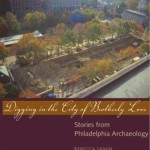 2010
2010
Digging in the City of Brotherly Love, Stories from Philadelphia Archaeology.
By Rebecca Yamin. Yale University Press, New Haven, 2008.
Winner of the Society for American Archaeology 2010 prize for the best book in the public audience category, Digging in the City of Brotherly Love brings to life both Philadelphians from the past discovered through archaeology and the archaeologists in the present who tell their stories. Taking up where The Buried Past left off, Digging describes the archaeological projects conducted during the redevelopment of Independence Mall in the late 1990s and the results of analyzing the thousands of artifacts that belonged to the people who lived and worked there in the eighteenth and nineteenth centuries. Among the residents were bureaucrats in the federal government when it was seated in Philadelphia and African Americans involved in the founding of St. Thomas’s African Episcopal Church. In the eighteenth century the blocks buzzed with workers — coachmakers and cabinetmakers, butchers and bakers — and in the nineteenth century there were merchants who would become the city’s middle class. The story of the enslaved members of George Washington’s household is told and so is the story of the struggle that led to the memorial now standing on the site. The book also covers some landmark archaeological projects from the past including the excavation of two burial grounds belonging to the First African Baptist Church and the uncovering of a slipway used for repairing boats on the shore of the Delaware River. Digging in the City of Brotherly Love is an overview of archaeological research in Philadelphia and it is also an introduction to urban archaeology — to the methods used to make and interpret the finds and to the politics that surround the projects. Available in hardback and as an ebook.
*****************************************************************
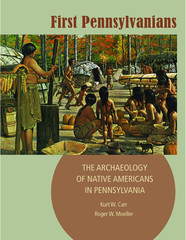
First Pennsylvanians: The Archaeology of Native Americans in Pennsylvania
By Kurt W. Carr, PhD, Senior Curator of Archaeology at The State Museum of Pennsylvania, and Roger W. Moeller, PhD
In First Pennsylvanians, Kurt Carr and Roger Moeller provide a broad, accessible, and wide-ranging overview of the archaeological record of Native Americans in Pennsylvania from early prehistory through the Paleoindian, Archaic, Transitional, Woodland, and Contact periods, stretching from 16,500 years ago to 1750 c.e. The authors present and analyze specific traits of each archaeological time period covered and use the archaeological record to provide a glimpse of Native Americans’ daily life in Pennsylvania. First Pennsylvanians also includes personal stories and anecdotes from archaeologists about their experiences in the field as well as a wealth of illustrations and diagrams. The chapters examine the environment, social groups, tools, subsistence, and settlements of patterns of Native Americans in Pennsylvania and describe how these factors profoundly affected the populations and cultures of these early inhabitants of the region.
256 pages, paperback; 124 color photos and illustrations. This Commonwealth of Pennsylvania publication can be purchased here…
++++++++++++++++++++++++++++++++++++++++++++++++++++++++++++++++++++
Historical Archaeology of the Delaware Valley, 1600-1850
Edited by Richard Veit and David Orr
2014 University of Tennessee Press
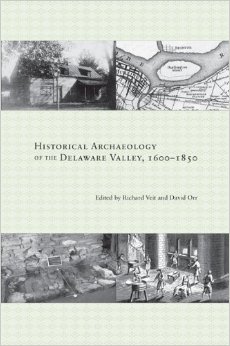
The Delaware Valley is a distinct region situated within the Middle Atlantic states, encompassing portions of Delaware, Pennsylvania, New Jersey, and Maryland. With its cultural epicenter of Philadelphia, its surrounding bays and ports within Maryland and Delaware, and its conglomerate population of European settlers, Native Americans, and enslaved Africans, the Delaware Valley was one of the great cultural hearths of early America. The region felt the full brunt of the American Revolution, briefly served as the national capital in the post-Revolutionary period, and sheltered burgeoning industries amidst the growing pains of a young nation. Yet, despite these distinctions, the Delaware Valley has received less scholarly treatment than its colonial equals in New England and the Chesapeake region.
In Historical Archaeology of the Delaware Valley, 1600–1850, Richard Veit and David Orr bring together fifteen essays that represent the wide range of cultures, experiences, and industries that make this region distinctly American in its diversity. From historic-period American Indians living in a rapidly changing world to an archaeological portrait of Benjamin Franklin, from an eighteenth-century shipwreck to the archaeology of Quakerism, this volume highlights the vast array of research being conducted throughout the region. Many of these sites discussed are the locations of ongoing excavations, and archaeologists and historians alike continue to debate the region’s multifaceted identity.
The archaeological stories found within Historical Archeology of the Delaware Valley, 1600–1850 reflect the amalgamated heritage that many American regions experienced, though the Delaware Valley certainly exemplifies a richer experience than most: it even boasts the palatial home of a king (Joseph Bonaparte, elder brother of Napoleon and former King of Naples and Spain). This work, thoroughly based on careful archaeological examination, tells the stories of earlier generations in the Delaware Valley and makes the case that New England and the Chesapeake are not the only cultural centers of colonial America Vol. 25, 2006:77-92.
**********************************************************************************************
a href=”https://www.phillyarchaeology.net/wp-content/uploads/2012/08/witness.jpg”>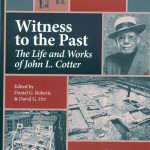
2007 Witness to the Past: The Life and Works of John L. Cotter
Philadelphia was home to John L. Cotter, a leader in the field of archaeology who is often thought of as a role model for current and future archaeologists. Cotter worked for the National Park Service in Philadelphia and at the University of Pennsylvania. He conducted and supervised archaeological research across the nation as well as here in the city, including within Independence Park. Cotter’s life story mirrors the development of 20th century American archaeology. This 2007 book gathers together a large number of his popular and scholarly works on Native American and Colonial American archaeology. An entire section of the book is devoted to Philadelphia Urban Archaeology. Also included are Cotter’s writings about the importance of educating the public about archaeology and his reflections about working as an archaeologist during the Depression, about being a retired archaeologist, and of ‘being there at the beginning’ as a pioneer breaking new ground. Tributes and memorials submitted by his colleagues and by students he mentored summarize and analyze Cotter’s contributions to the discipline. A vast bibliography of his works is provided that includes unpublished reports and manuscripts in the John Cotter Papers and Collections archived at Independence National Historical Park and at the University Museum of Archaeology and Anthropology at the University of Pennsylvania.
This informative and inspirational book was edited by archaeologists Daniel D. Roberts and David G. Orr. Its production was supported and promoted by the Philadelphia Archaeological Forum (PAF) which is dedicated to the protection and preservation of archaeological resources in the City of Philadelphia. Published by The Society for American Archaeology in cooperation with The Society for Historical Archaeology (ISBN: 0-932839-31-2 ), this volume is available for purchase at SAA Press.
***************************************************************************************************
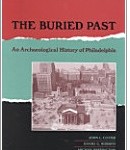 1992 The Buried Past: An Archaeological History of Philadelphia. Edited by John L. Cotter, et al. Philadelphia: University of Pennsylvania Press, c1992. 524 pages ISBN-10: 0812231422 ISBN-13: 978-0812231427 The ‘bible’ of Philadelphia archaeology.
1992 The Buried Past: An Archaeological History of Philadelphia. Edited by John L. Cotter, et al. Philadelphia: University of Pennsylvania Press, c1992. 524 pages ISBN-10: 0812231422 ISBN-13: 978-0812231427 The ‘bible’ of Philadelphia archaeology.
***************************************************************************************************
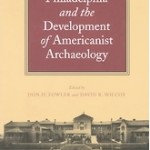 2003 Philadelphia and the Development of Americanist Archaeology. Edited by Don D. Fowler and David R. Wilcox. University of Alabama Press, Hardcover: 240 pages ISBN-10: 0817313117 ISBN-13: 978-0817313111 (also available in paperback)
2003 Philadelphia and the Development of Americanist Archaeology. Edited by Don D. Fowler and David R. Wilcox. University of Alabama Press, Hardcover: 240 pages ISBN-10: 0817313117 ISBN-13: 978-0817313111 (also available in paperback)
**************************************************************************************************
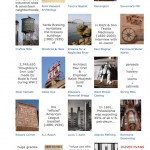 2007 [1990] Workshop Of The World — A Selective Guide to the Industrial Archeology of Philadelphia. Oliver Evans Press, 1990; adapted for the internet in 2007. This 1990 guidebook, created by members of the Oliver Evans Chapter of the Society for Industrial Archeology (SIA) was recently reissued in cyberspace. At this new set of web pages, a sampling of the City of Philadelphia’s industrial history is examined neighborhood by neighborhood. The sites included were selected based on three criteria: their cultural significance (historical, architectural, engineering, and or industrial reasons), their representation of the industries prominent to a specific neighborhood, or their status vis a vis imminent danger of demolition or collapse. Each chapter provides a discussion of the history and development of the neighborhood company, a discussion of its extant buildings and structures, and a discussion of the technologies, processes, and machines that survive in place at www.workshopoftheworld.com .
2007 [1990] Workshop Of The World — A Selective Guide to the Industrial Archeology of Philadelphia. Oliver Evans Press, 1990; adapted for the internet in 2007. This 1990 guidebook, created by members of the Oliver Evans Chapter of the Society for Industrial Archeology (SIA) was recently reissued in cyberspace. At this new set of web pages, a sampling of the City of Philadelphia’s industrial history is examined neighborhood by neighborhood. The sites included were selected based on three criteria: their cultural significance (historical, architectural, engineering, and or industrial reasons), their representation of the industries prominent to a specific neighborhood, or their status vis a vis imminent danger of demolition or collapse. Each chapter provides a discussion of the history and development of the neighborhood company, a discussion of its extant buildings and structures, and a discussion of the technologies, processes, and machines that survive in place at www.workshopoftheworld.com .
by admin